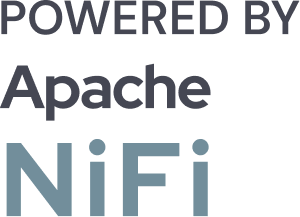Optimize NiFi for Peak Performance: 7 Proven Strategies for Better Speed & Scalability
![]()
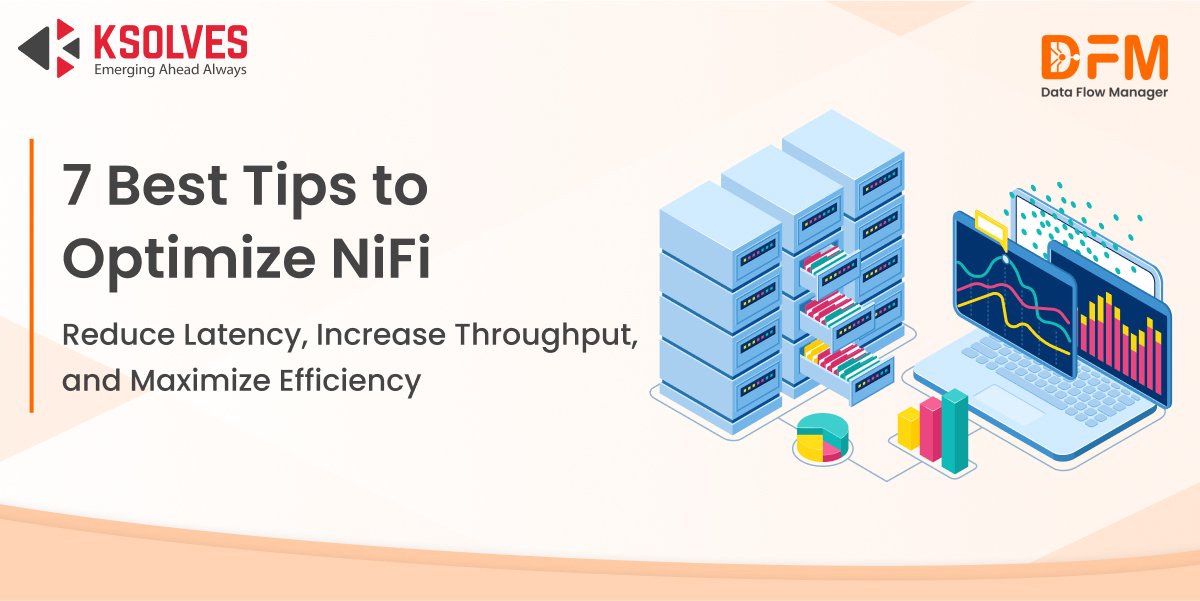
Apache NiFi has revolutionized data movement with its intuitive flow-based design, making it a go-to choice for organizations dealing with massive data pipelines. However, as data volumes grow, performance optimization becomes crucial to ensure smooth, efficient, and scalable operations.
Whether you’re managing a single-node instance or a clustered NiFi deployment, optimizing its performance requires a mix of hardware tuning, smart flow design, and leveraging automation tools.
In this blog, we’ll explore the best strategies to optimize NiFi for maximum efficiency and high performance.
Understanding NiFi’s Architecture
Before diving into optimizations, it’s essential to understand NiFi’s core architecture. NiFi is built around a flow-based programming model, where data is represented as FlowFiles, and processing occurs through Processors connected in a directed graph.
Key components affecting performance:
- FlowFiles: Represent data moving through the system, consuming memory and disk space.
- Processors: Execute tasks like data transformation, enrichment, or routing. Poorly configured processors can cause bottlenecks.
- Repositories: NiFi maintains multiple repositories (FlowFile, Content, Provenance), each requiring optimal configuration to prevent slowdowns.
Understanding how these elements interact is the foundation for improving NiFi performance.
Key Benefits of Optimizing NiFi
Optimizing NiFi is not just about improving speed—it delivers a range of benefits that impact efficiency, scalability, and operational costs:
- Increased Throughput: Faster data ingestion, processing, and delivery across pipelines.
- Reduced Latency: Optimized configurations ensure minimal delays in data movement.
- Lower Resource Consumption: Efficient flow design and tuning reduce CPU, memory, and storage usage.
- Enhanced Scalability: Well-optimized NiFi clusters handle growing workloads without performance degradation.
- Improved Reliability: Eliminating bottlenecks ensures stable and error-free data flows.
- Simplified Management: Leveraging tools like Data Flow Manager reduces manual intervention and enhances automation.
- Better Compliance & Security: Optimized security settings protect data without unnecessary overhead.
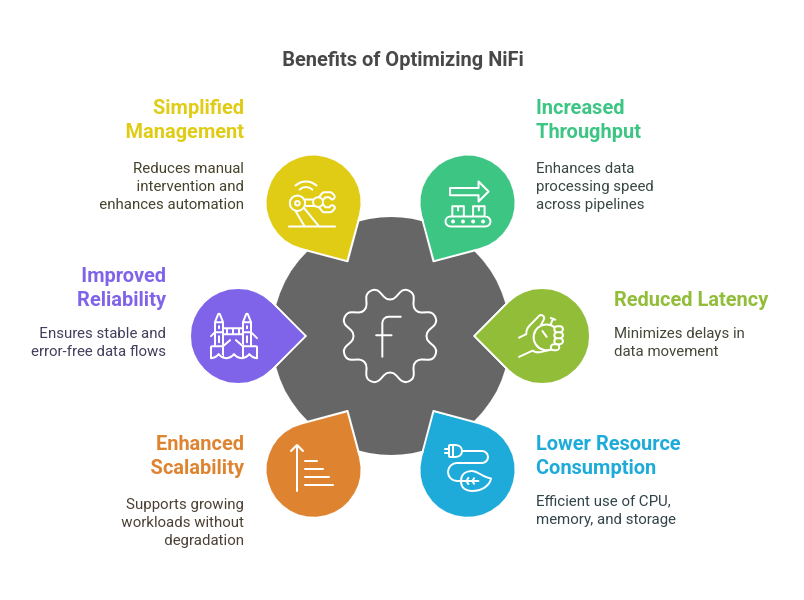
Best Strategies to Optimize NiFi for Enhanced Speed, Stability, and Scalability
1. Optimizing Hardware and System Resources
The right hardware configuration plays a significant role in NiFi’s efficiency. Consider the following optimizations:
- Use SSDs over HDDs: Faster disk access speeds reduce latency, especially when dealing with high-throughput data ingestion.
- Allocate Sufficient RAM: Large datasets require more memory to prevent excessive disk swapping. Allocate at least 8GB+ RAM, depending on workload size.
- Tune JVM Settings: NiFi runs on Java, and configuring the heap size (-Xms and -Xmx parameters) prevents memory overflows. A good starting point is setting the heap to 50-75% of the total system memory.
- Optimize Network Throughput: If running in a clustered environment, ensure low-latency networking with sufficient bandwidth for inter-node communication.
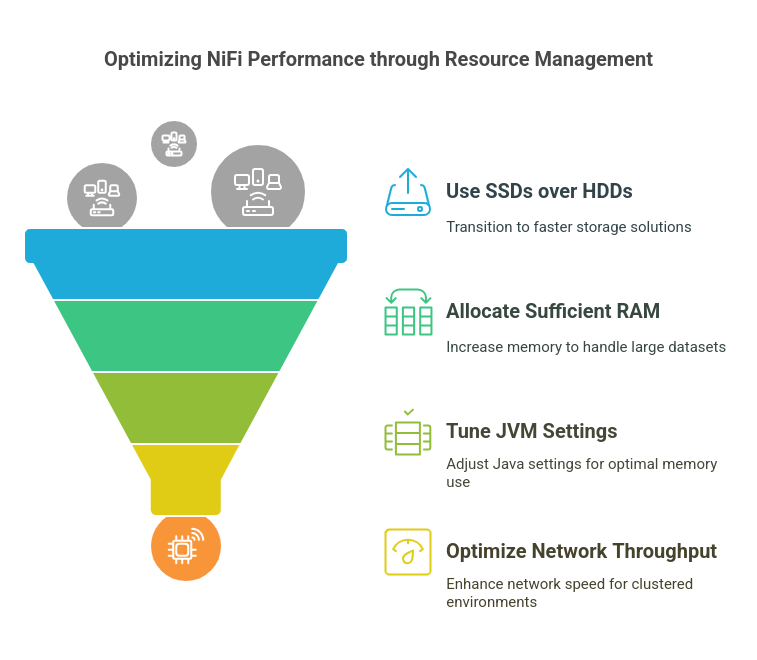
2. Tuning NiFi Configuration for Performance
NiFi’s default settings work well for small-scale deployments, but larger environments require fine-tuning:
- Adjust FlowFile Repository Settings: Set nifi.flowfile.repository.implementation to WriteAheadFlowFileRepository for faster performance.
- Optimize Back Pressure: Prevent overloading processors by setting appropriate thresholds (nifi.queue.backpressure.count.threshold and nifi.queue.backpressure.size.threshold).
- Reduce Provenance Repository Overhead: Provenance tracking can be resource-intensive. Consider using VolatileProvenanceRepository for less critical logs.
3. Optimize Data Flow Design
NiFi performance depends significantly on how flows are designed. Poorly structured flows lead to bottlenecks, slow processing, and resource exhaustion.
- Avoid Overusing Processors: Instead of chaining multiple processors, consolidate logic where possible.
- Limit Logging: Excessive logging (DEBUG mode) can slow down execution. Keep logging at INFO or ERROR levels.
- Use MergeContent and Split Processors Wisely: Managing large files effectively reduces processing time and memory usage.
With Data Flow Manager, you can generate NiFi data flows in just minutes. AI-powered data flow generation eliminates the hassle of manually designing and configuring NiFi flows. Simply enter the source, destination, and a description in natural language, and Data Flow Manager will generate data flows for the most common use cases in no time.
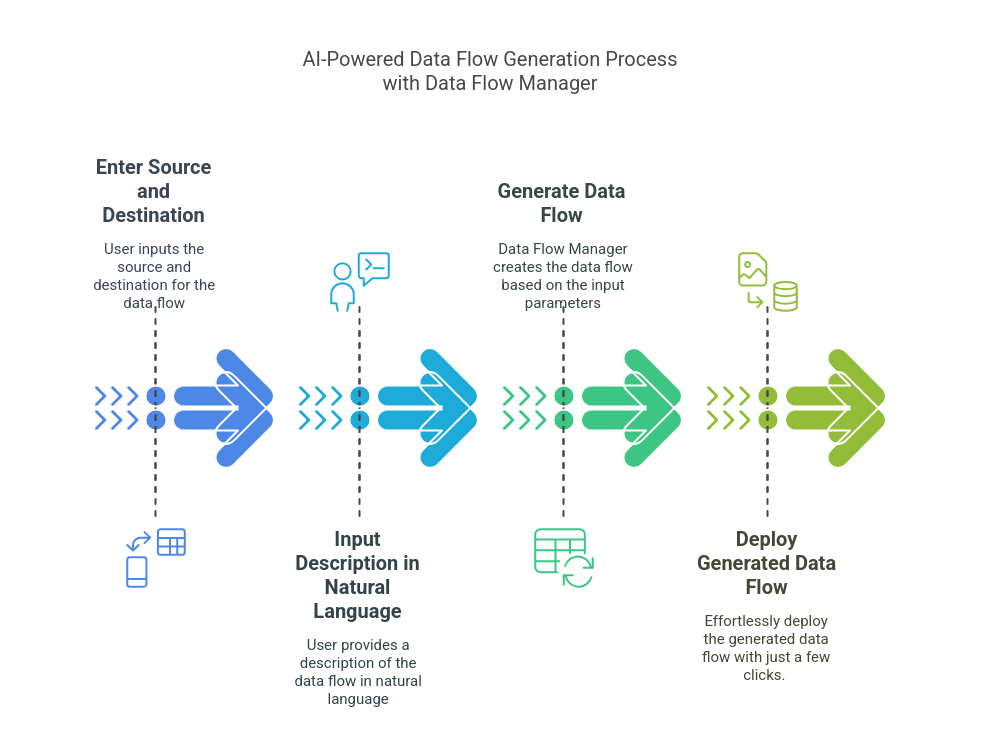
Also read: Best Data Flow Optimization Tips in Apache NiFi
4. Effective Thread and Load Management
NiFi’s performance is highly dependent on its threading model. To optimize:
- Increase Concurrent Tasks for High-Throughput Processors: Adjust Run Schedule and Concurrent Tasks settings for processors handling large volumes of data.
- Distribute Load Across Nodes: When running a NiFi cluster, ensure tasks are balanced to prevent node overloading.
- Identify Thread Starvation Issues: If you notice performance degradation, check if threads are getting stuck waiting on I/O operations.
5. Leveraging NiFi Clustering for Scalability
For large-scale deployments, clustering is essential to handle increasing workloads. Best practices include:
- Enable Load Balancing: Configure Remote Process Groups (RPGs) to distribute data processing dynamically across nodes.
- Ensure Proper Node Synchronization: NiFi’s cluster coordination relies on Zookeeper. Optimize Zookeeper configurations to prevent sync delays.
- Monitor Cluster Health: Use built-in monitoring tools to track cluster performance and node failures.
6. Using Data Flow Manager for End-to-End Cluster Management
Managing NiFi clusters manually can be time-consuming and error-prone. Data Flow Manager’s UI-driven NiFi Control Portal simplifies these operations with:
- Automated NiFi Cluster Installation – Deploy NiFi clusters effortlessly with one-click provisioning, reducing setup time and configuration errors.
- Rolling NiFi Cluster Upgrade & Patch Management – Perform seamless upgrades and patch deployments without downtime, ensuring continuous operations.
- SSO, Kerberos, and LDAP Integration – Enhance security and user authentication with enterprise-grade access management.
- Centralized NiFi Cluster Logging & Monitoring – Gain real-time visibility into cluster performance, processor execution times, and system health.
- Advanced Alerts & Custom Processor Deployment – Set up proactive alerts to detect issues early and easily deploy custom processors for tailored data flow needs.
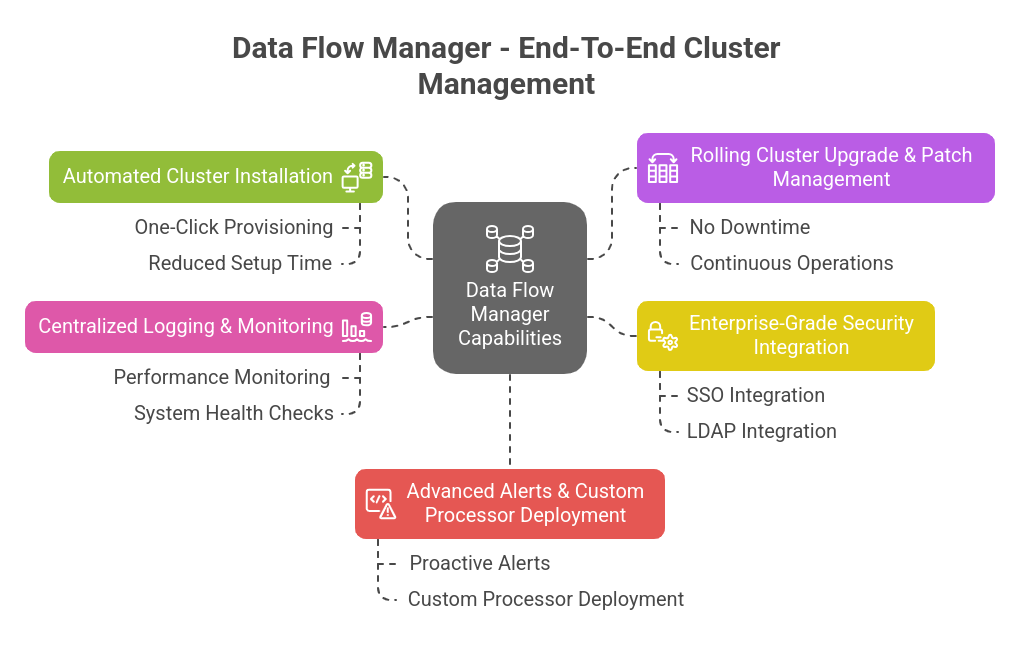
7. Security Considerations and Their Impact on Performance
Security settings can affect NiFi’s performance. Optimize security configurations while maintaining robust protection:
- Manage SSL/TLS Overhead: Encrypting data in transit is essential, but excessive SSL/TLS handshakes can slow down processing. Use persistent connections where possible.
- Use Lightweight Authentication Mechanisms: Avoid overly complex authentication protocols that add processing overhead.
- Restrict Unnecessary User Access: Implement role-based access control (RBAC) to prevent unauthorized resource consumption.
Conclusion
Optimizing NiFi for performance is a continuous process. By fine-tuning configurations, designing efficient data flows, and leveraging automation tools like Data Flow Manager, organizations can achieve faster, more scalable, and highly efficient data processing.
With the right approach, NiFi can handle massive data workloads effortlessly, ensuring seamless operations and minimal downtime. Start optimizing today and unlock the full potential of your NiFi deployment!
![]()
